Although I would love to use this article to tell you all about the things I did during my trip to Italy, I want to keep it more appropriate for the content of my blog. And therefore, I will only share with you the art destinations (museums, galleries, halls, gardens, etc.) you must visit during your next trip to Italy. Due to some family events, I wasn’t able to visit all the places I had wished to visit, but that won’t hold me back from sharing them here.
The list:
- The Vatican museums
- The Sistine Chapel
- The Spiral Staircase
- The Pinacoteca
- Villa Borghese
- The Colonna Gallery
- The Doria Pamphilj Gallery
- Palazzo Altemps
- Villa Farnesina
- Saint Ignazio
- Chiostro del Bramante
A little tip before we get started
Do not go during summer 🙂
I know it’s called an Italian summer for a reason. But the heat and the crowds were incredibly exhausting. I will never again visit Italy in July. Maybe I would go swimming but not walk around or go see museums and art galleries because it was really hectic.
Art trip to Italy: The Vatican Museums
I started my Italy art trip in Rome. I mean, it is the city of art, so that’s kind of obvious.
My first art destination was the Vatican Museums. It was a really dreamy experience. Vatican City is a busy destination, and the long lines under the heat will make you give up on your desire to visit the museums. However, I was able to get my hands on a ticket that granted me a guided tour and entry to all iconic destinations of the Vatican City that was also “skip-the-line”. Let me tell you, this is a lifesaver option.
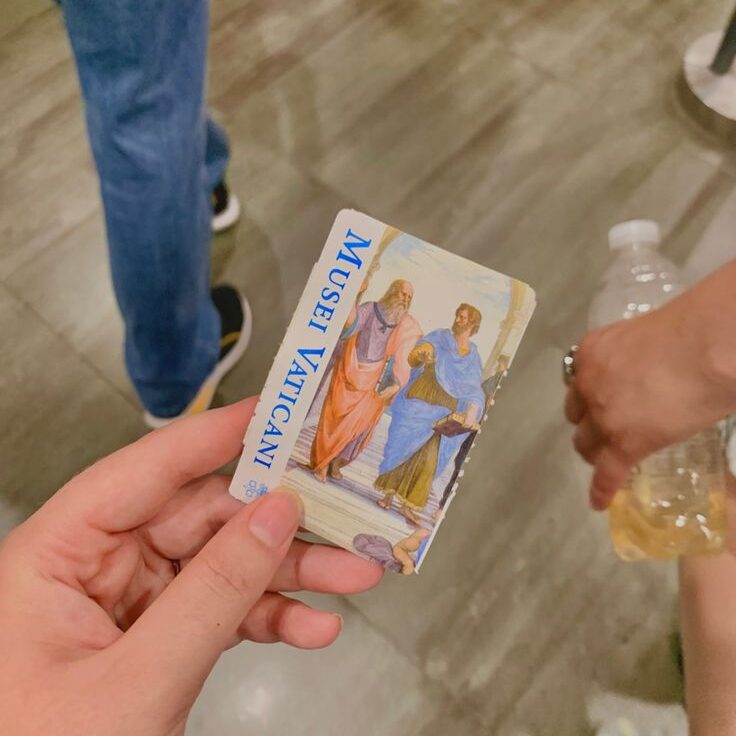
I booked mine through the Get Your Guide app (a free app available for both iOS and Android). For this ticket specifically, I paid 90 euros as I booked it only 4 days before my trip, but you can get it for half the price if you use my link. I would also like you to keep in mind that going up the dome is not included in your ticket. If you want to do that, you will need to get a ticket in place (right next to the entrance of the St. Peter Basilica) and pay an extra 10 euros for the option with the elevator and 6 euros for the no elevator option.
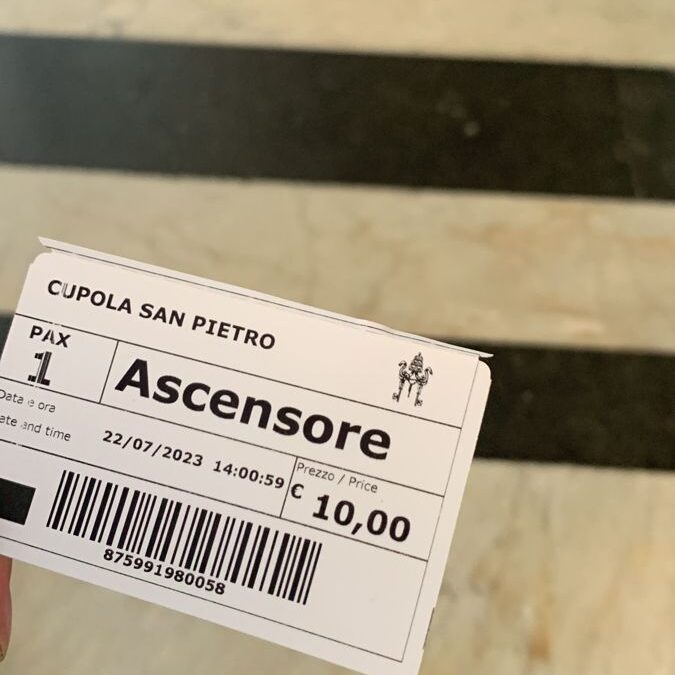
The Vatican Museums
The Vatican museums are 54 in total, including the Sistine Chapel and the Stanze della Segnatura (it was super crowded when I visited; we couldn’t manage to visit the Stanze della Segnatura and had to wait for about 30 minutes to access the Sistine Chapel). And it is home to 70.000 paintings and sculptures. The main things that you must see are:
The Sistine Chapel
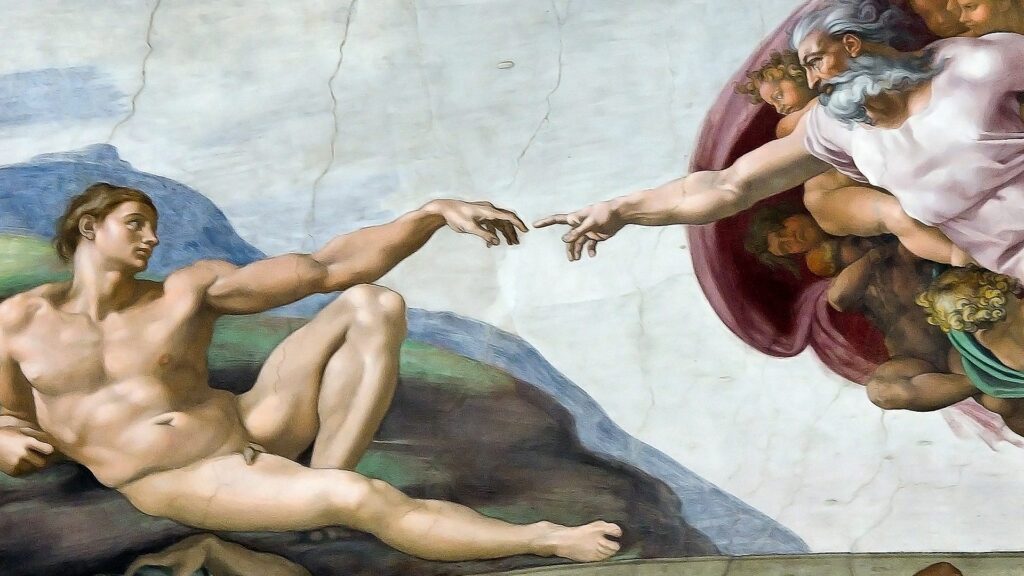
The Sistine Chapel is where you can see the original “Creation of Adam” painted on the ceiling by Michelangelo, alongside “The Last Judgement” and the other nine scenes from the book of Genesis (Creation of Eve, the Flood, and the Rebirth of Mankind with the Family of Noah, etc.).
The Papal Apartments: Stanze della Segnatura and the Borgia apartments
These are easily skipped if your guide wants to shortcut to the Sistine Chapel (and will not be included in your tour, so make sure to get a proper ticket with the Raphael Rooms included). The Room of the Segnatura contains Raphael’s most famous frescoes. Besides being the first work executed by the great artist in the Vatican, they mark the beginning of the High Renaissance. And you certainly don’t want to miss seeing that.
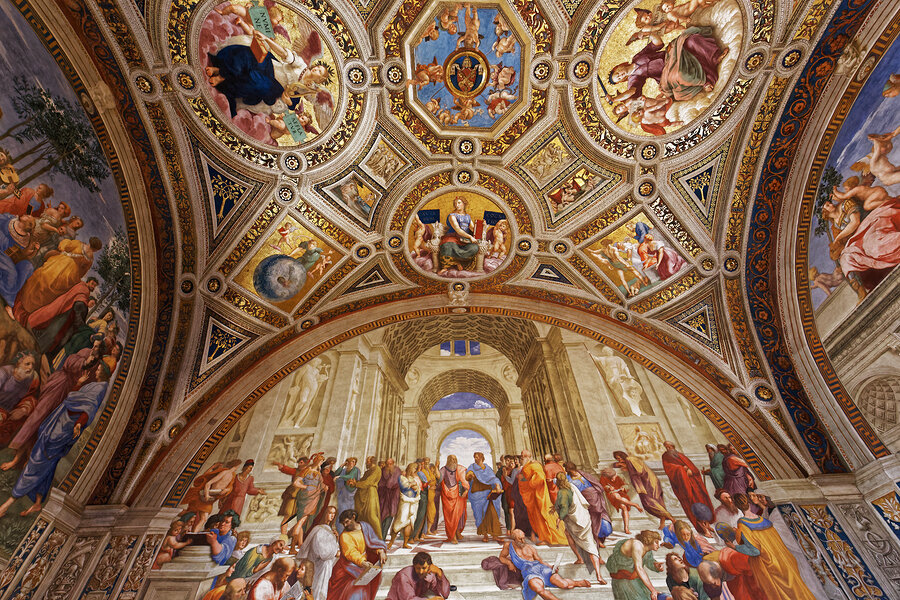
The Apollo Belvedere statue
The first piece to exist in the art collection of the Vatican before there were Vatican museums
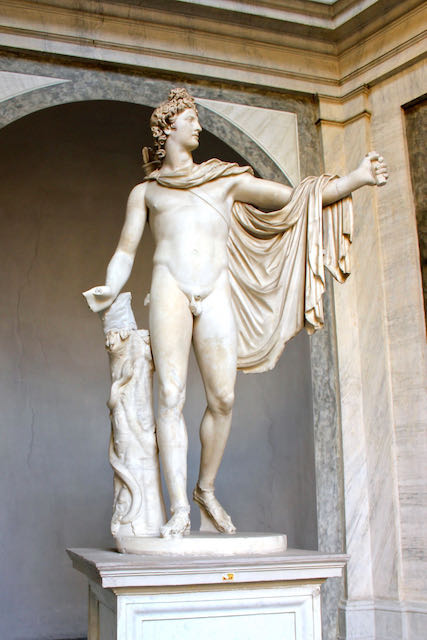
The sculpture portrays the god Apollo, (who existed in both Greek and Roman mythology), as an archer who just shot an arrow. And it shows what was once considered the “ideal” male body, without a single flaw. It was also said that this statue was Napoleon’s favorite piece of art that he took from the Vatican to the Louvre. After Napoleon’s fall, this statue and most of the rest of the art pieces he took were returned to Rome and to the Vatican.
Galleria degli Arazzi– The Tapestries Hall
You will certainly visit this gallery, as you have to walk through it to get to the Sistine Chapel. However, it might start to get overwhelming after you have seen hundreds of artworks and statues.
What I want you to focus on in this gallery are the tapestries on the left wall. That is a series of tapestries that were created in Brussels by Pieter van Aelst’s School and depict the life of Jesus.
The most wonderful part is the following tapestry (in the picture below), which was created in a “moving perspective“. That means that as you walk past the tapestry and keep your eyes on the eyes of Jesus, you see them moving with you and sense his presence through this majestic work of art. Another mesmerizing part of this hall is the ceiling, which looks like plaster and is actually painted to look like that! I’m just amazed, and my mind can’t process all the mastery.
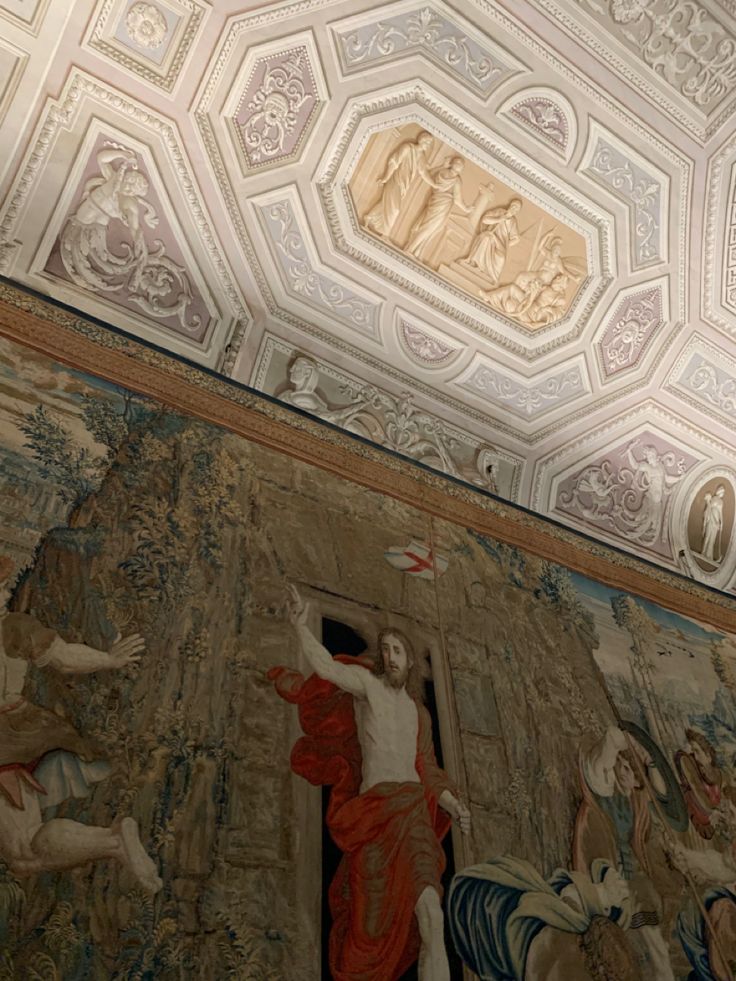
The Map Hall
This hall follows the tapestry hall and is hands-down amazing. I would’ve personally walked through it in a hurry to reach the Sistine Chapel if it weren’t for the amazing insights that my guide was providing. These maps were created in the 1500s and are both accurate and whimsical. They have stunning gold details of sea creatures and Neptune, the Roman God of the sea. Some of them also show how obelisks were brought from ancient Egypt to Rome via the sea.
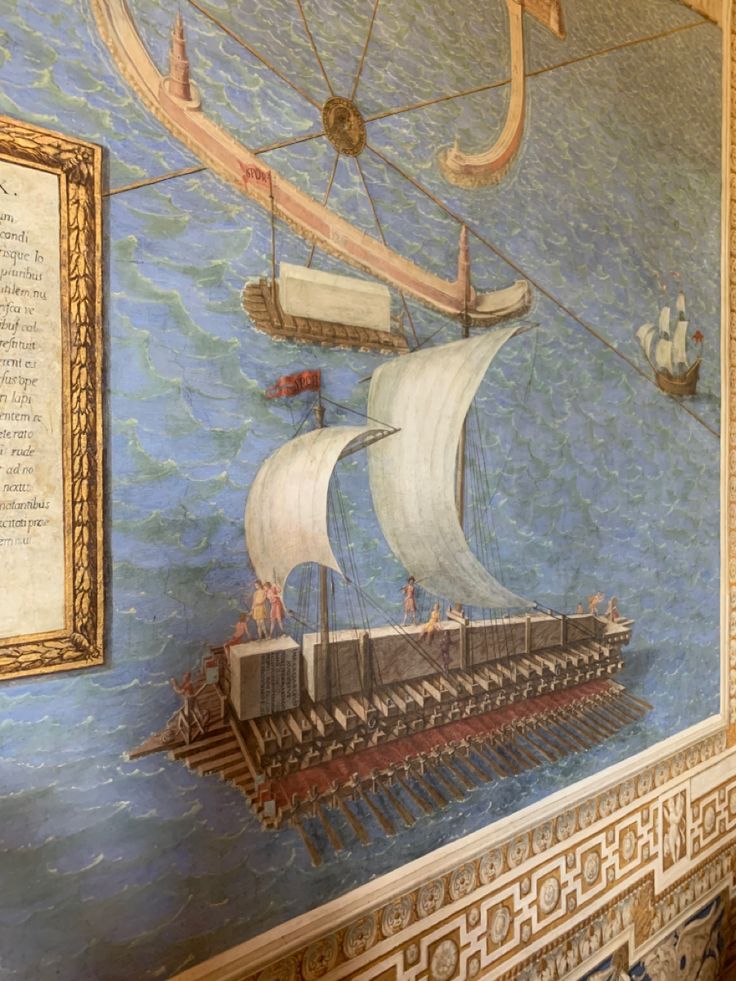
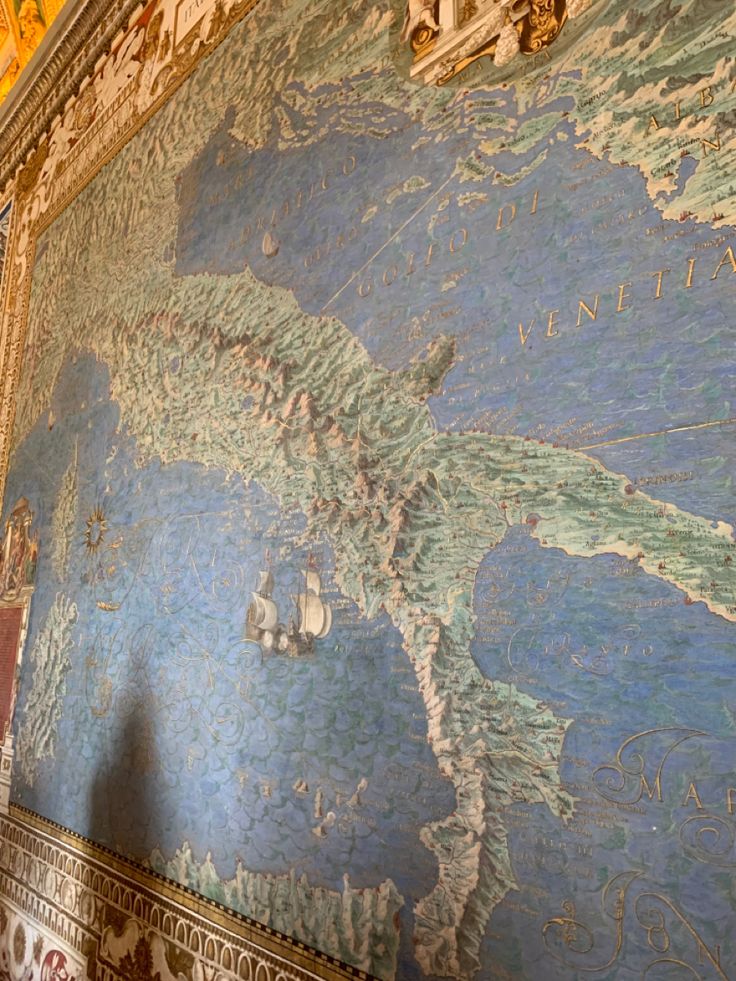
The icons I wish I didn’t skip during my tour
The Spiral Staircase
So iconic that you have at least seen its picture once online. It is a spiral staircase composed of two staircases that allow people to go up and down without crossing each other. Sadly, nowadays, it is only intended as an exit from the Vatican Museums.
Since my tour included the St. Peter Basilica, I did not exit the museums via this staircase, as I went from the Sistine Chapel directly into the basilica, and I didn’t know about this ATM anyway (so sad).
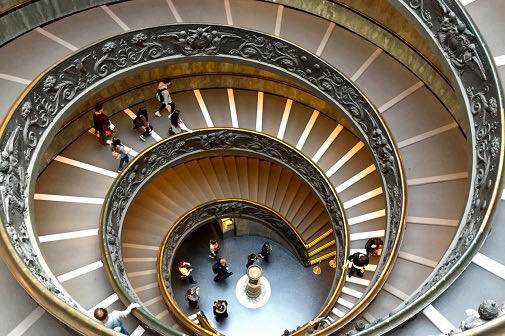
The Pinacoteca
It takes a lot of time to see every part of the Vatican, surely. But this painting gallery is one of the places I regret not visiting. You again need to book a ticket that includes the Pinacoteca to be able to visit it. There are so many works to see, mainly Raphael’s last work right before he died, The Transfiguration.
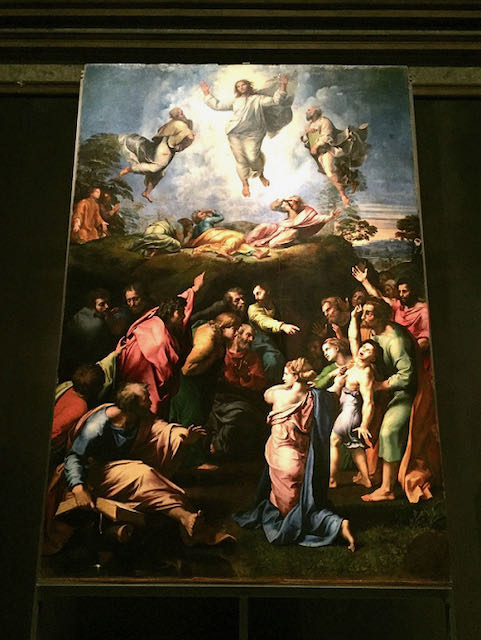
The Transfiguration is seen as the bridge between what is called a “High Renaissance” painting (early 1500s) and a “Baroque style” painting (early 1600s).
Raphael used chiaroscuro (“light on dark”, a technique made even more famous by Caravaggio), to highlight the darkness of the sick boy on earth (at the bottom of the painting), and the lightness of Jesus’s body in heaven (at the top of the painting).
And unlike so many of Raphael’s previous paintings, including the Raphael rooms in the Vatican Museums, the figures in this painting portray extreme and very human emotions: awe, disbelief, and anguish.
Rotunda Room And The Porphyry Basin
I have actually visited this room but my guide skipped this piece of information, so I’m here to help you out with it (thank me later :))
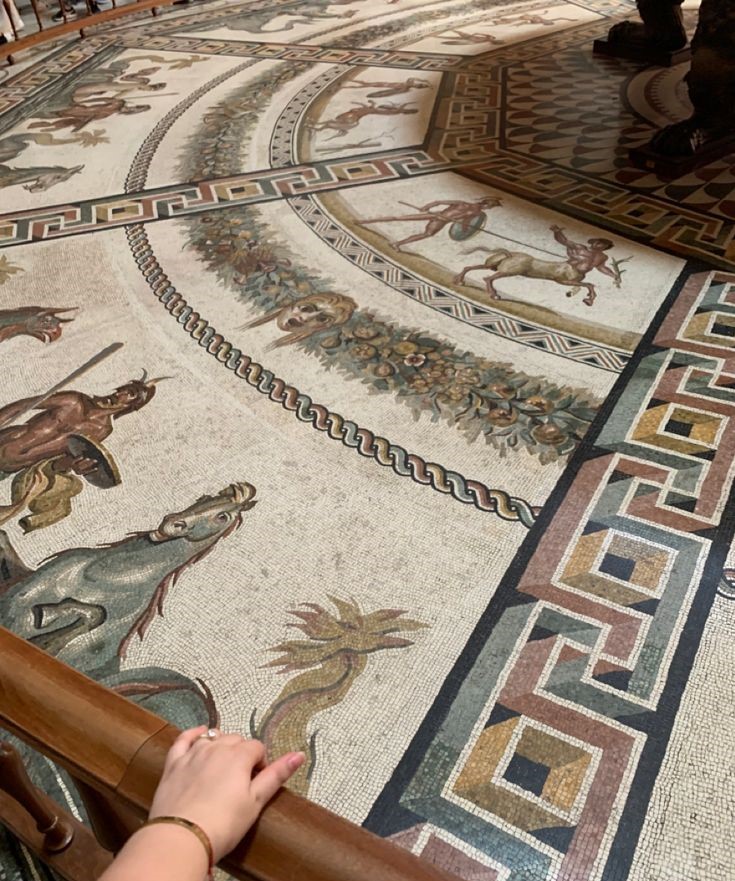
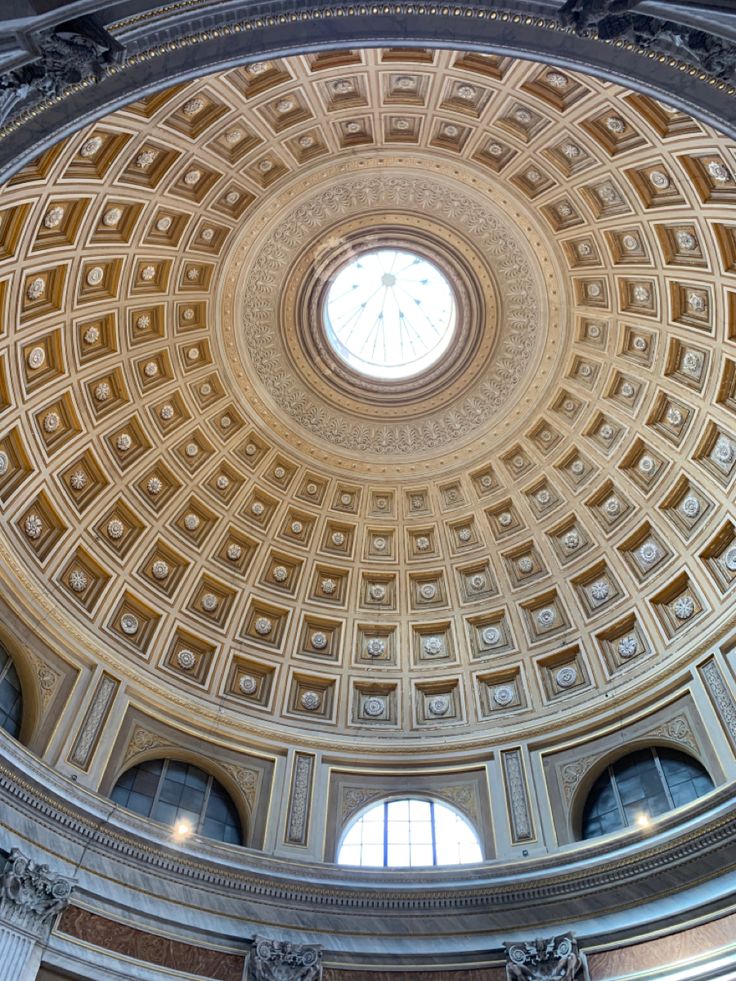
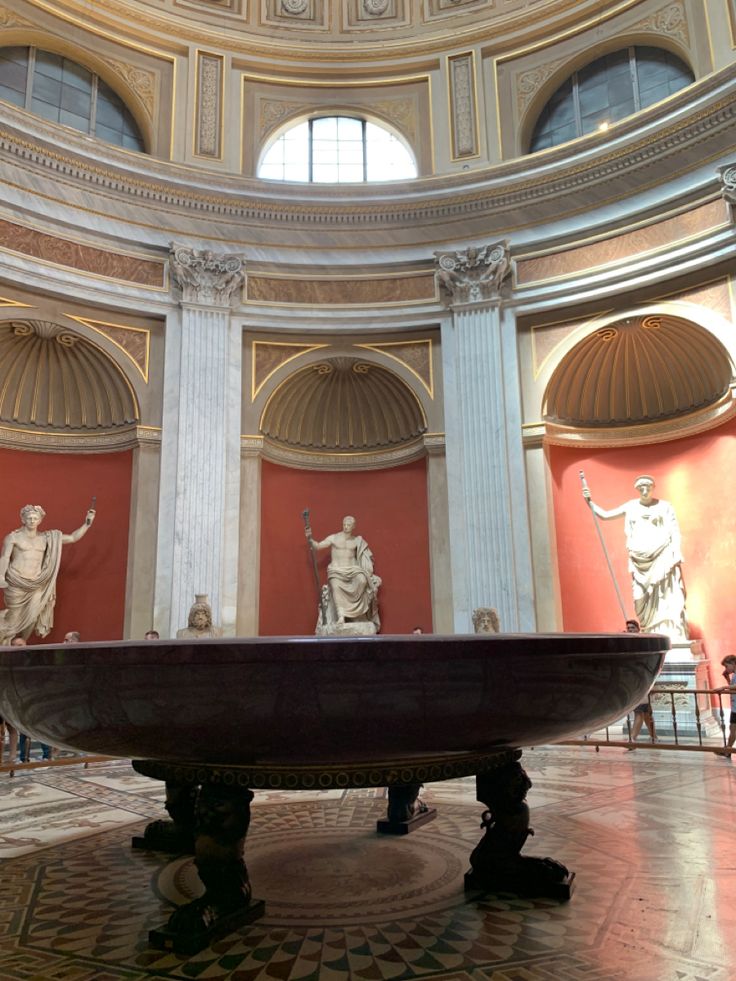
First of all, the ceiling of the rotunda room is modeled after the Pantheon. Second, the floor depicts tens of myths in mosaics from around the 2nd century. And last but not least, the giant Porphyry Basin.
What is porphyry? It is a rock created from cooled lava that is full of large pieces of crystal. It is unbelievably heavy, extremely resistant, and almost impossible to cut. And it exists only in Egypt ((there is one quarry in Ancient Egypt where all the porphyry rock came from).
Think about this: about 2000 years ago, the emperor Nero ordered a bath for his Golden House and had someone get this giant rock out of Egypt and then carve it into a single piece like this and get it to Rome. Another piece of information for you is that this porphyry basin also refers to the reddish-purple color that was considered royal in ancient Rome.
Art trip to Italy: Rome
The Vatican Museums are breathtaking for real. However, that’s not everything to see in Rome in terms of art. Your next stop will have to be Villa Borghese. I still can’t believe that I couldn’t actually visit Borghese during my trip to Italy. But I’m trying to recover from it; don’t worry.
Villa Borghese
Home to some of the most iconic paintings and sculptures in the history of Italy. Bernini, one of my favorite masters, has some of his best works exhibited inside the Villa Borghese.
1- The Rape Of Proserpina By Bernini (Exhibited in Room IV)
This iconic and very emotional piece of art is definitely worth visiting.
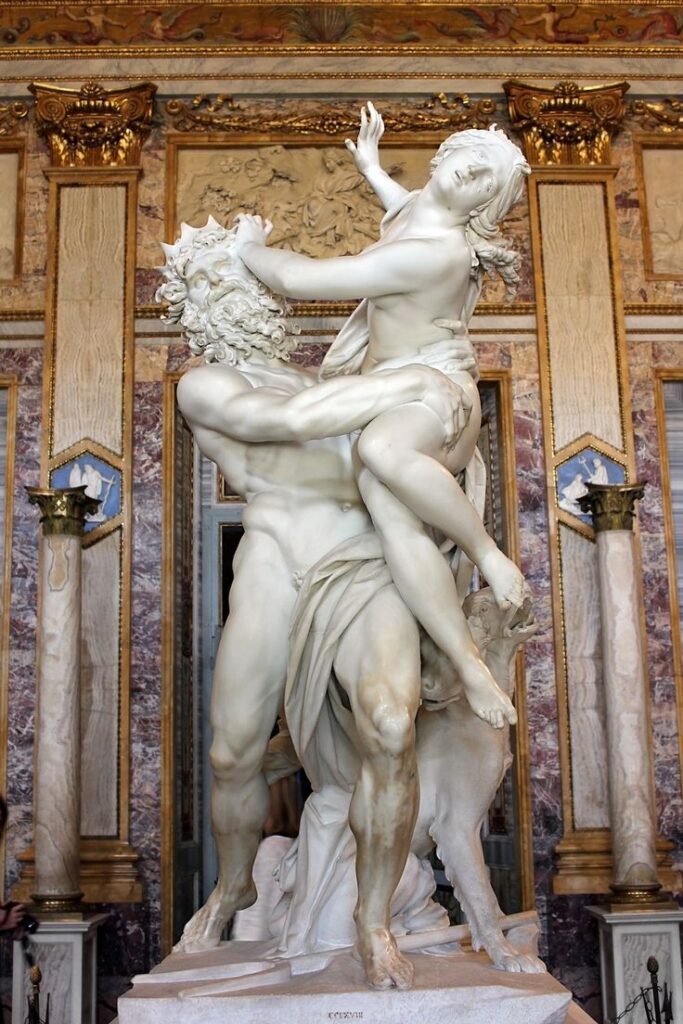
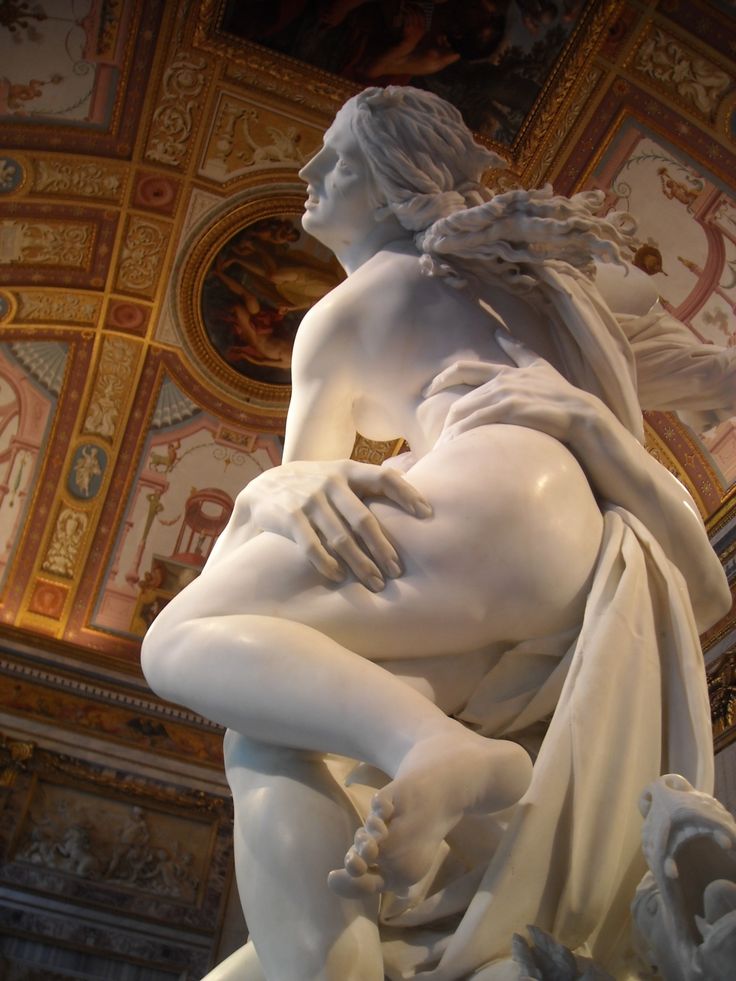
The story is that Pluto, the god of the dead and underworld, came to abduct Proserpina, goddess of agriculture and daughter of Jupiter, the god of gods, while she was picking flowers one afternoon.
Out of sadness, Proserpina stopped making the world bloom, and all things died. Jupiter intervened and made a deal with Pluto. Proserpina would spend half the year with Pluto and half the year above ground. In this incredible story, we see how early people struggled with the idea of the seasons and how to explain them. A story of gods makes it easier to digest.
But what catches my attention is how the grip of Pluto’s fingers on the thigh of Proserpina could be literally felt although it is all just an illusion and they are both made of stone. Totally magical.
2- Apollo And Daphne By Bernini (Exhibited in Room III)
Legend has it that Apollo encountered Daphne and Eros (or Cupid) when he was walking through the woods. He began to mock Cupid (I imagine for his size), and eventually, Cupid became frustrated and retaliated.
Modern society only describes Cupid’s good side as shooting golden arrows and helping people fall in love. Well, he also had lead arrows in his repertoire, and I bet you can guess what they did. He shot Apollo with a golden arrow and Daphne with a lead one. Apollo saw Daphne and immediately fell in love. Daphne saw Apollo, and the lead arrow had the opposite effect.
Apollo raced after Daphne through the forest, madly in love. Daphne pleaded with her father, Penues, the River God, to free her from Apollo.
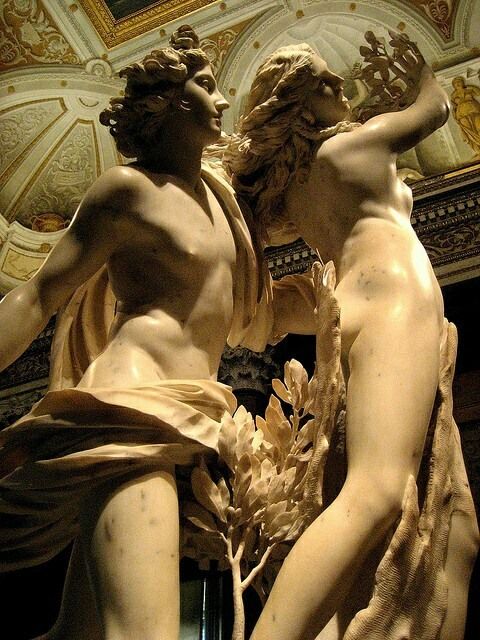
If you start from Apollo’s back right and walk around the statue counter-clockwise, you’ll see Daphne’s metamorphosis into a Laurel tree. The statue group was designed to be placed in the center of the room and be viewed in motion.
Apollo, in turn, used his power of eternal youth, and this is the reason that Laurel’s trees are evergreen!
You can actually learn the detailed story from walking around the sculpture (you’ve got to do it for yourself in person).
The Colonna Gallery (the Versaille of Rome)
A real masterpiece of the Roman Baroque and a must-see in Rome, you will find works of art by Pinturicchio, Tintoretto, Cosmè Tura, Carracci, Guido Reni, Salvator Rosa, Bronzino, Guercino, and Vanvitelli.
I highly recommend you include Palacio Colonna or the Colonna Gallery in your art trip to Italy.
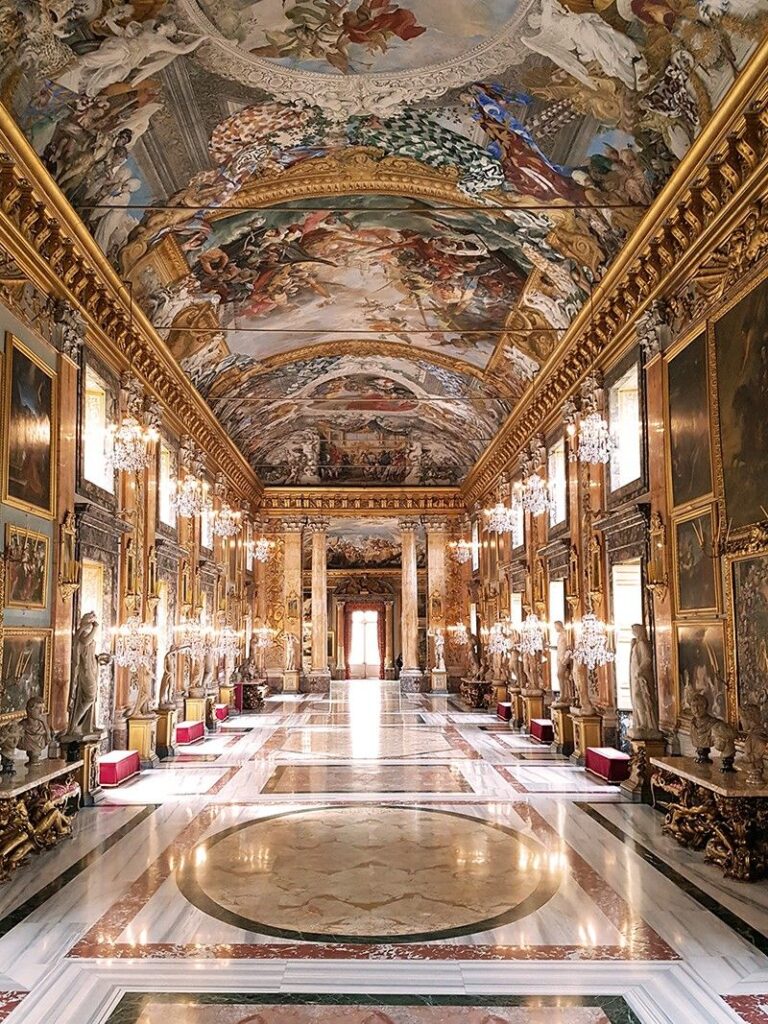
The Doria Pamphilj Gallery
Another must-see during your art trip to Rome. The best part about the Doria Pamphilj Gallery is that it is still under-appreciated and you don’t see many people talking about it on social media. This means the tickets are pretty affordable and the gallery is way less crowded.
Also if you are a Rococo lover, you can’t skip on this one.
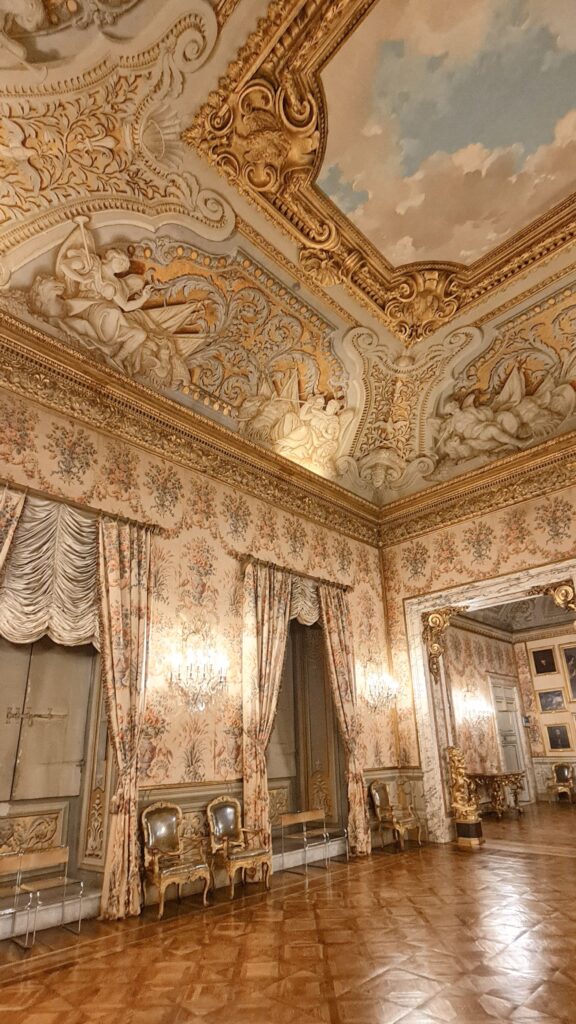
You can grab your entry ticket here.
Palazzo Altemps
You can grab a ticket that allows you access to the Roman National Museum with access to Palazzo Altemps, Palazzo Massimo, Baths of Diocletian, and Crypta Balbi for a great price here.
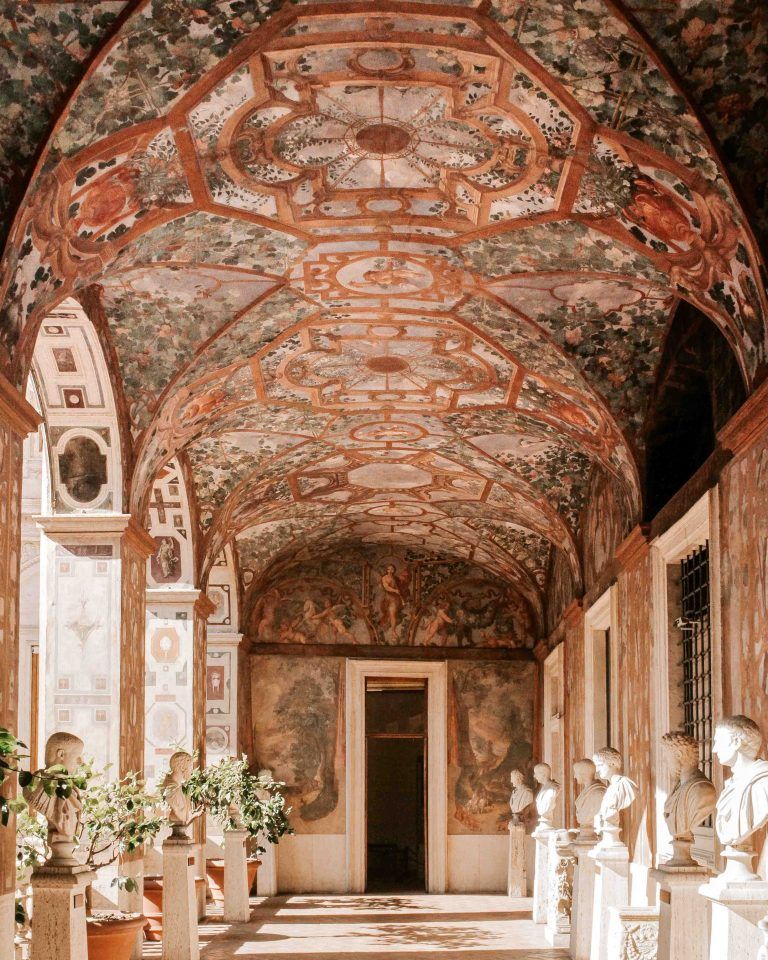
Before entering the palace, take the time to admire the altana, the corner tower: it is one of the oldest – if not the oldest – in Rome. Inside the building, the cortile the inner courtyard, is also beautiful. The loggia covered with frescoes is simply grandiose. The walls and ceilings of the palace are covered with sumptuous Renaissance and Baroque frescoes!
Among the emblematic statues and historical remains on display at the Palazzo Altemps, be sure to have a look at:
- The Ludovisi Gaul (aka The Galatian Suicide)
- The Ludovisi Ares (restored by Bernini)
- The Ludovisi Battle sarcophagus
- The Ludovisi Throne
- The Ludovisi Dionysus
- The Juno Ludovisi
Villa Farnesina
The Villa Farnesina is a Renaissance suburban villa in the Via della Lungara, in the district of Trastevere in Rome, central Italy. Built between 1506 and 1510 for Agostino Chigi, the Pope’s wealthy Sienese banker, it was a novel type of suburban villa, subsidiary to his main Palazzo Chigi in the city.
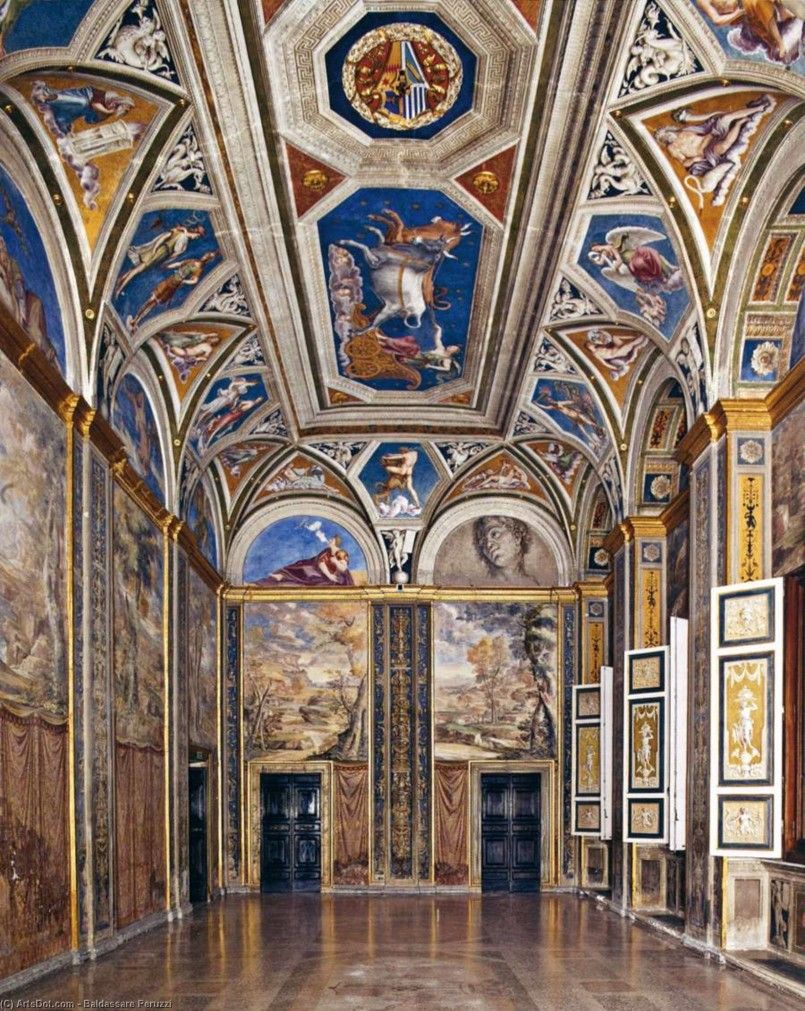
Church of Saint Ignatius of Loyola
The place of the infinite mirror selfie that you see all over Pinterest and Instagram. The ceiling of this church is majestic. And the entry requires no ticket. I highly recommend you go see it during your art trip to Italy.
Chiostro del Bramante (café in a museum)
A very colorful and Instagramable place that I would’ve loved to visit in Rome. It’s a stunning café inside a contemporary museum that would be super fun to hang out at. So do not skip it on your next art trip.
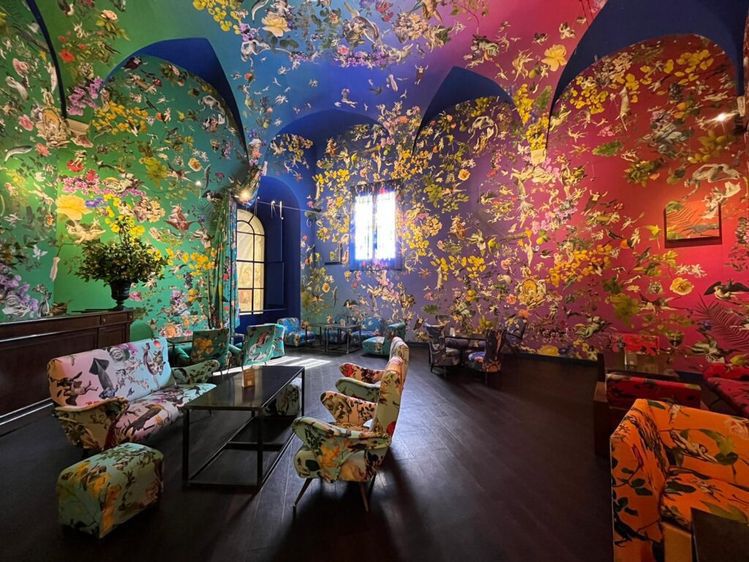
Conclusion
If you are planning an art trip to Italy, make sure you start from Rome and stay longer enough in the city. You should also make sure to book your tickets beforehand to avoid wasting your time waiting in lines. I hope this blog post was helpful and I hope you find the inspiration you seek to enjoy creating <3


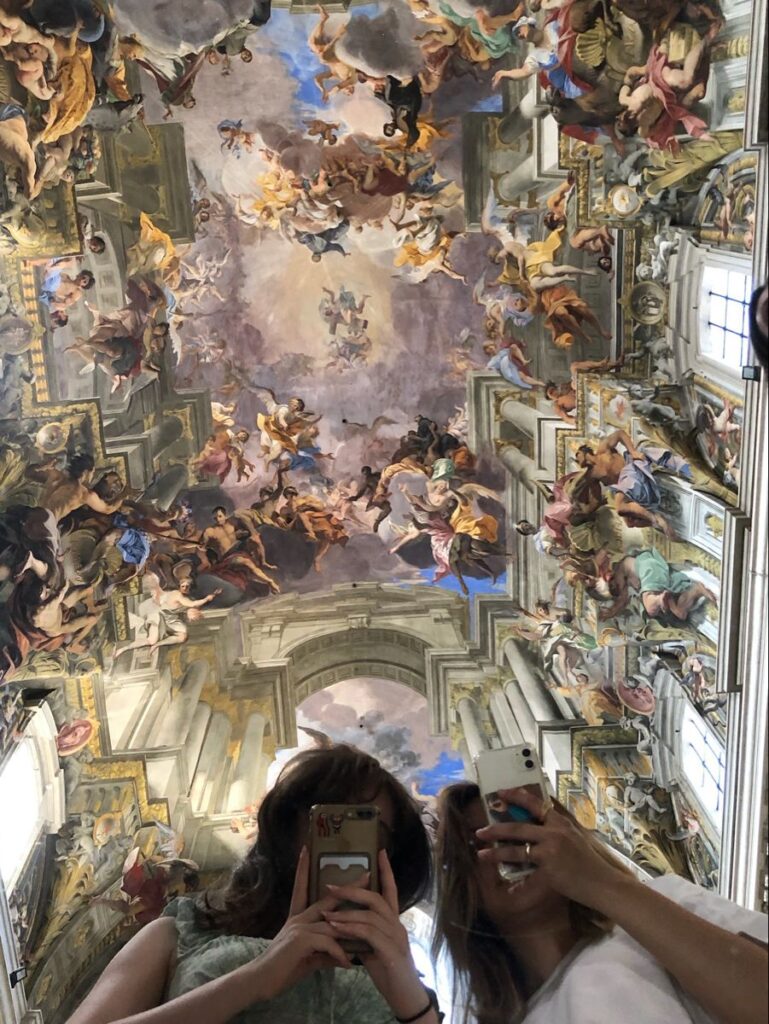
1 Comment